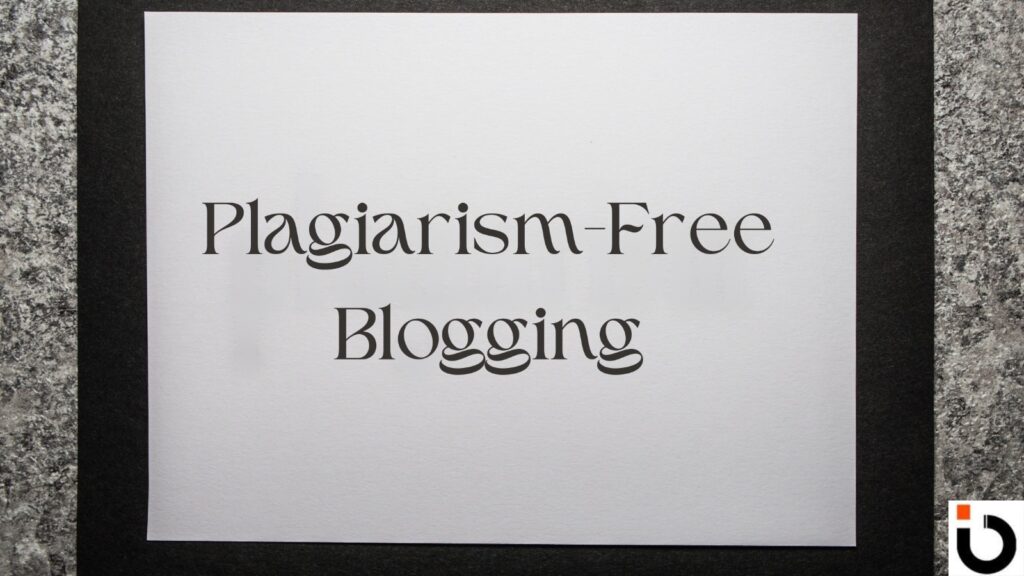Know that readers crave fresh perspectives, not some sort of recycled content. So, simply copying others’ ideas can never do the job for you. Just think of it yourself: if your blog sounds like every other article online, why would anyone choose yours?
Search engines won’t reward duplication, and audiences won’t engage with something they have seen before.
So, plagiarism clearly dilutes your credibility and weakens your influence as a writer.
However, the concerning part is not just about eliminating duplication. It is actually to maintain the value, relevancy, and clarity of the content while ensuring it is engaging and plagiarism-free.
8 Effective Tips To Create Unique, Plagiarism-Free Blogs:
Here are 8 writing tips that every writer deserves to know if you really want to generate high-quality, plagiarism-free, and original blogs.
1. Conduct In-Depth Research
If you want your content to stand out from the rest, then don’t just rely on one source. Gather information from multiple sites, and when you know you have well-rounded information about the topic, write it reflecting your own understanding.
For this, read multiple articles, research papers, and expert opinions to gain diverse insights. Compare facts, identify trends, and note down what you can possibly cover in the topic.
Although the approach is simple, trust me, it can indeed enhance the quality and value of your content. Moreover, checking facts from multiple sites also ensures you don’t spread any misinformation.
2. Write in Your Own Words
When you write in your own words, it gives you the margin to use your unique voice and opinion. Therefore, instead of directly copying the information, understand the concepts and explain them naturally. Don’t try to fake the tone or overcomplicate things. Just use simple language and discuss the idea clearly and effectively.
This way, it not only helps you avoid plagiarism but also makes your content engaging, readable, and easier to follow.
3. Use Proper Citations
The main reason why your content is flagged as plagiarized is that you are unable to properly cite and attribute the original source. As a writer, you should be aware that when you copy and use someone else’s words, ideas, or data in your content, you have to give the original creator their deserved credit. Otherwise, your content will be considered duplicated or plagiarized.
So, make sure if you add any quotes, statistics, or ideas from another source in your blog, you use quotation marks around it and add proper citations ( include the author’s name, publication date, and source). Moreover, provide a reference link to the original resource to help readers verify the information.
4. Take Notes Instead of Copying
Whenever you are researching any topic, don’t directly copy the information. Instead, take note of the key ideas that attract you. Summarize the key ideas in your own words and write them down in a notebook or separate document file so you can discuss them naturally and originally later on. Trust me, this approach indeed helps you avoid any sort of duplication of plagiarism in your work. Just adopt the key content rather than the phrases.
Well-structured notes improve content flow and clarity. For this, in my opinion, the simplest way to organize your notes is by jotting them down. Let me explain. Write down the core ideas in bullet points to ensure you keep track of all important details without stressing about duplication.
Thus, this simple habit ensures that your content remains original and plagiarism-free while maintaining a clear and engaging tone.
5. Develop a Unique Perspective
When you add your personal insights to a blog, you actually give it a unique perspective, which makes it stand out in the market. Readers value fresh ideas and perspectives over repeated information. Therefore, when you prioritize original thoughts and analysis over rewriting existing content, it indeed makes you a more credible source.
For this, you can utilize real-life examples or case studies to introduce unique context in your content. Moreover, try to address commonly asked questions and discuss them from unique angles and perspectives. A distinct perspective not only avoids plagiarism but also engages your audience.
6. Utilize Plagiarism Checkers
To ensure your writing is truly original, it’s wise to run your content through a trusted plagiarism checker. This simple step helps verify that your work is free from any unintentional duplication.
The tool scans your text against a vast database of published sources to detect potential matches. By identifying similarities early, you can revise and refine your content before it leads to any plagiarism-related concerns.
7. Paraphrase to Write Better, Original Content
Sometimes, rather than directly copying the content and then citing the source, you can make your content appear unoriginal and less credible. So, why don’t you sometimes rephrase the ideas in your own words and then use them in your content? This way, you can add the information without exactly copying someone’s words.
Although it seems quite straightforward, it is not as simple as it sounds. It takes writers hours to manually rephrase their content, and still, the content remains error-prone or, you can say, at risk of being plagiarized. So, if you want to save time and ensure originality, it’s better that you take a little help from AI.
You can use an AI-powered paraphrase tool to revise the text in a unique, fresher way without losing its core meaning. So, it indeed helps you avoid plagiarism and makes your content more engaging, readable, and coherent. Moreover, these tools also help you avoid repetition in your writing. Hence, it makes your writing more accurate and easier to follow.
So, in my opinion, integrating them into your writing process not only improves fluency but also helps in generating high-quality, original content effortlessly.
8. Revise and Edit Thoroughly
If you want to ensure that your blog is original and credible, then don’t rush to publish it right after your first draft. Instead, take time to revise and refine your content before finalizing it.
Sometimes, unintentional similarities slip in during the writing process, therefore, you have to carefully go through and edit content to spot and eliminate them. Try to clarify complex ideas. Avoid redundancy and repetitive phrasings. Make sure every word you write adds value to your writing.
Moreover, remove the unnecessary fluff and work on improving the flow of your ideas. This way, a well-reviewed blog not only strengthens originality but also makes your writing more engaging and impactful.
Wrap Up for Plagiarism-Free Blogging
Creating plagiarism-free content is not just about avoiding duplication; it is about adding real value. A well-researched original blog earns trust, credibility, and engagement. Ethical writing goes beyond citations and tools; it reflects integrity and creativity.
The more effort you put into understanding and refining ideas, the stronger your content becomes. Technology can assist, but authenticity comes from your insights and voice. Focus on delivering content that informs, inspires, and stands apart.




